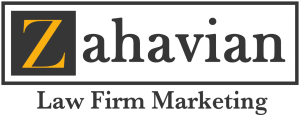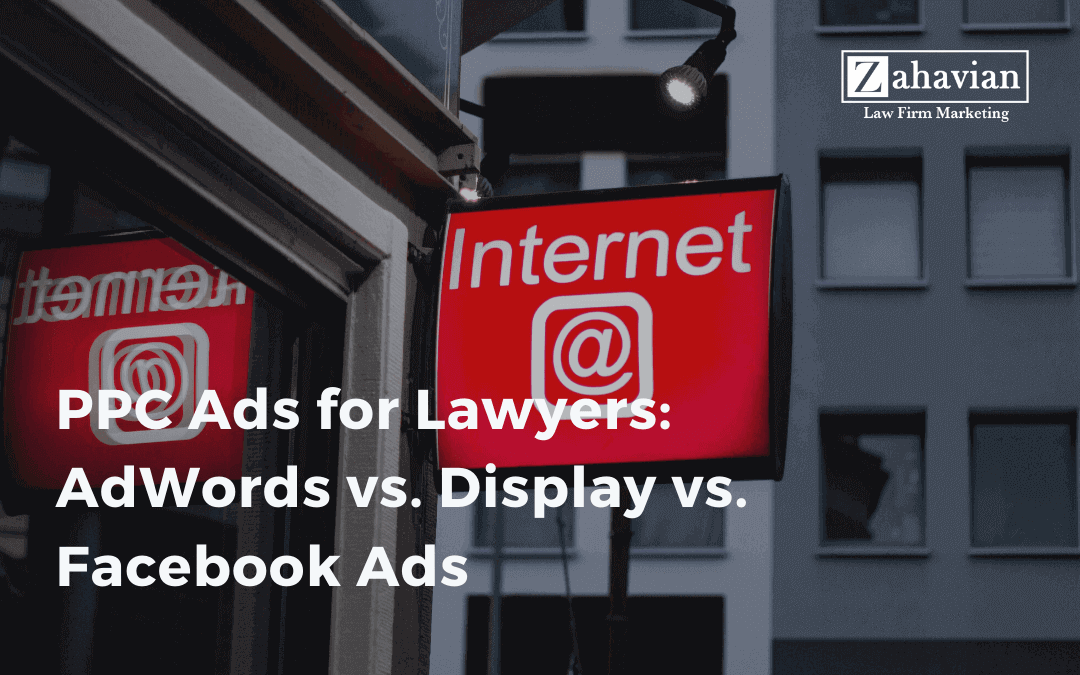There is a growing number of PPC ad platforms for advertisers and marketers to use. However, when it comes to digital advertising and PPC ads for Lawyers and Law Firms, there are several large, mainstream services to look at using.
In this article, we’re going to look at 3 services in particular: Google AdWords (now known as Search Ads), Google Display Network (including YouTube ads) and Facebook Ads.
Google AdWords
If you’re unfamiliar with AdWords, it’s the platform used to run the text ads above the page results Google search returns to you after typing in what you wanted to search for.
AdWords is Google’s SEM (Search Engine Marketing) service. Similar to SEO, in that your traffic is coming from the same source (Google or Bing search, etc.) but you don’t pay these search engines to be listed organically. Your site is either optimized to rank on the first page or it isn’t. In SEM, you can pay the search engines to list your site in the results along with the organic results.
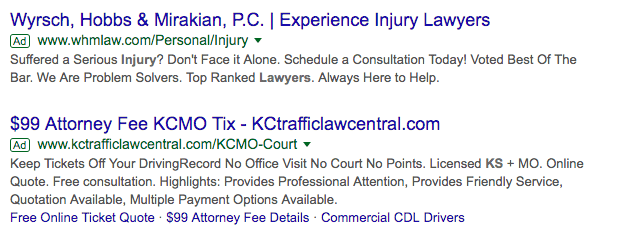
These ads are intended to blend in natively with the page results. They are intended to be relevant suggestions for things that the user is searching but paid of course. When someone types in “personal injury lawyer atlanta”, Google will return you a list of the top 10 results it found that best match the user’s query.
These 10 results are known as organic results. Above and below these 10 coveted results are paid ad results. You’ll see local injury lawyers in your city using these types of ads.
Pros of AdWords
These ads can be highly effective in targeting the right audience. With AdWords, you can control when your ads are going to be displayed to users. Over time, you can refine your targeting to an audience that demonstrates a very high amount of intent in searching for a business like yours.
- You can decide which keywords you want to target and selectively reject keywords you don’t want to target.
- You control what the ad copy says with the space google give you.
- Lots of budgeting controls. AdWords allows you to set a daily budget and change it virtually in real-time. One day you could be advertising on Google and the next day you can pause or stop your ads altogether.
Cons of AdWords
It’s expensive
Google Adwords relies on a bid system. This means that people will compete for keywords and hence drive up the demand for them. This works because Google being Google, has a vast amount of data on how many people per month are searching for a certain keyword or group or related keywords. It’s like stocks on the stock market, company stock isn’t being issued, it’s being traded through bidding.
The legal industry has historically had one of the highest if not the highest CPC (cost-per-click) on Google since lawyers have started using it. If you don’t know, CPC works by only charging you every time someone clicks on your ad. It’s not uncommon to pay $5 per click for your ad when it was displayed to someone who searched for ‘lawyer’. However, for the more competitive areas of law like personal injury lawyers, you can expect to pay North of $50 per click.
Steep Learning Curve
If you’re brand new to AdWords, then I suggest you learn about it for a while, before starting your first campaign. You can use a different PPC strategy like Display Network or Facebook Ads to get started. Not that those are necessarily easier to use. But you can at least afford to make mistakes while still getting a decent return on investment. It’s not nearly as easy to achieve the same with AdWords. You can still net a great return from your AdWords campaigns. But you should definitely do your homework before getting started.
Takes Time to Optimize
Even after doing your homework, you shouldn’t expect to run a spectacular campaign your first time. Yes, you may get lucky, but I wouldn’t count on it. It’s going to take time to run ads, collect sufficient data, analyze it correctly to tune your campaign, release it back into the wild and then wash, rinse, repeat.
Note About the Cons
You can see that I spend a lot more time explaining the cons than the pros. It’s not that the pros aren’t great. However, in my experience, it’s much more important at the outset to be aware of the cons and pitfalls of AdWords.
Facebook Ads
Facebook has a wealth of different ad types that exist on it’s main website, Facebook.com, in the mobile app and on many apps and websites that partner with them, called it’s Audience Network.
It has also become clear to me that many lawyers don’t know whether they can effectively advertise on social media giant. Many lawyers and law firms have a Facebook business page. But beyond posting engaging images and articles, they do not see much potential in the platform. However, anyone can run advertisements, just like those shown below.

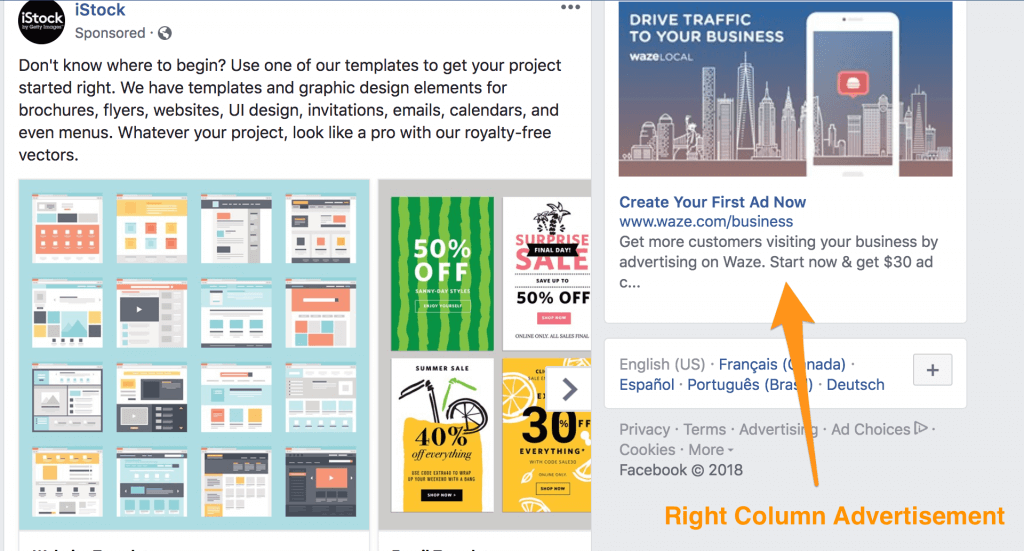
Facebook Ads are very different from Google Search Ads (AdWords). But it’s much closer in nature to Google Display Network Ads (see next section below). It’s not a search engine, so the comparison isn’t straight forward, however, they are still highly effective ads.
Pros of Facebook Advertising
Good Cost-per-Click
Of the 3 PPC platforms we’re discussing here, Facebook is going to be the most cost-effective for beginners. You can put together a decent looking ad. But do a poor job in targeting and segmenting your ad’s audiences and still generate enough promising leads to justify investing more time into learning and more money in future campaigns.
Flexibility in the Ad Creative
Facebook ads give you many different options in terms of what you can advertise, from using a photo of your lawyers or team in picture ad, to creating a video to promote your firm. It allows you to work on crafting the perfect ad from a combination of copywriting and media (video / photos).
Audiences & Re-Targeting
Probably the most powerful part of running ads on Facebook is the ability to retarget to people that have already engaged with your ads before or previously visited your website.
By using retargeting in your Facebook marketing strategy, you can spend a small fraction of your total Facebook budget on re-advertising to people who have already shown interest in your ads or business.
Cons of Facebook Ads
Low- to No-Intent
Before you get overly excited about the potential of running Facebook Ads, remember the audience you’re reaching with those ads. People generally aren’t on Facebook to look at your ad and call you up. They’re there to hang and talk with their friends, look at funny cat pictures and play Candy Crush.
Ad Fatigue and Audience Exhaustion
When you run an ad for too long on Facebook, you’re going to see your performance decline over time. This is usually done to either Ad Fatigue or Audience Exhaustion. Ad Fatigue stems from two main causes. The first is when your ad has been seen multiple times by people. The second way fatigue creeps in is that Facebook’s algorithm will tend to get your ad in front of more eyeballs at the start. Then, it’s algorithm will change how it displays your ad and you may see your performance dip.
Audience Exhaustion has to do with how often you’re repeatedly targeting the same group of people. If I see a lawyer’s ad on facebook today and the same ad two days from now, what are the odds that my legal situation has changed? What are the odds that I am a little annoyed that I keep seeing their ads? This actually relates to what we discussed about low intent on facebook. Your ads can definitely work, but understand that people don’t go to Facebook to be advertised to. Your agenda and theirs are completely different so you need to respect that.
Hindering Ad Policies and Guidelines.
You may get the idea that you’ll create a miniature version of an ad you get listed in the phone book and put that up on Facebook: combine your name and Logo, phone number, what services you offer into your ad’s image and then you’re ready to go! Not quite. Facebook’s algorithm scans your ad before it’s published. You’ll receive a warning if your ad contains “more text than it should” (according to Facebook). And if it contains more than 20% text covering the entire image ad, then they will prohibit the ad from running at all.
I have even had video ads that are prevented from running because Facebook’s systems have scanned through the video and found too much text in the backgrounds of the ads. To give you a better context, one ad had a lawyer talking to the camera and he was standing in front of a bookshelf. Facebook’s algorithm didn’t like it and just like that, we could no longer use that ad on facebook.
Audience building & Re-Targeting.
Yes, I did mention this as a Pro, but it is a con if you’re new to Facebook ads. The most powerful marketing feature that Facebook offers is also one of the most advanced features and takes some time and experience to perfectly craft. You can easily over-optimize an audience, which means that you actually won’t be targeting the key demographics and client types you’re looking for. If I were to build an audience of associate attorneys for instance (which you can, in fact), for some reason Facebook will decide to include other users that partially match the employment description. Because I want to match associate attorneys, they decided to include sales associates, Walmart associates and many other entirely unrelated people from the Network. Audiences are powerful. But you need to be careful when building them. You need to know how to test your audiences quickly for feedback and validation.
YouTube & Google Display Network
Google Display Network Ads allow advertisers to create banner ads that are display across many different websites, apps and even YouTube. Just as Facebook has their Audience Network, Google has their Display Network. According to Wikipedia, Google has over 11 million websites in their Ad Display Network.
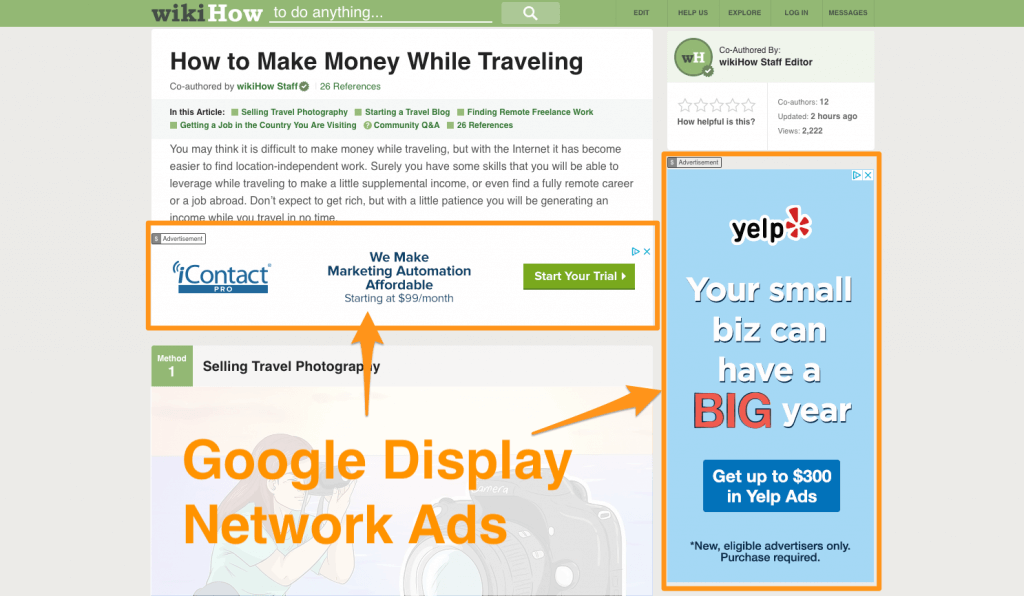
We are also clumping YouTube advertising into the Display Network Category, because aside from being able to advertise video content explicitly on the YouTube platform, Display Network and YouTube use the exact same Google Ads platform for managing advertisements. In short, any options for scheduling, ad placements, audience targeting, demographics, etc. that you can use for Display Network, you can use for YouTube ads as well.
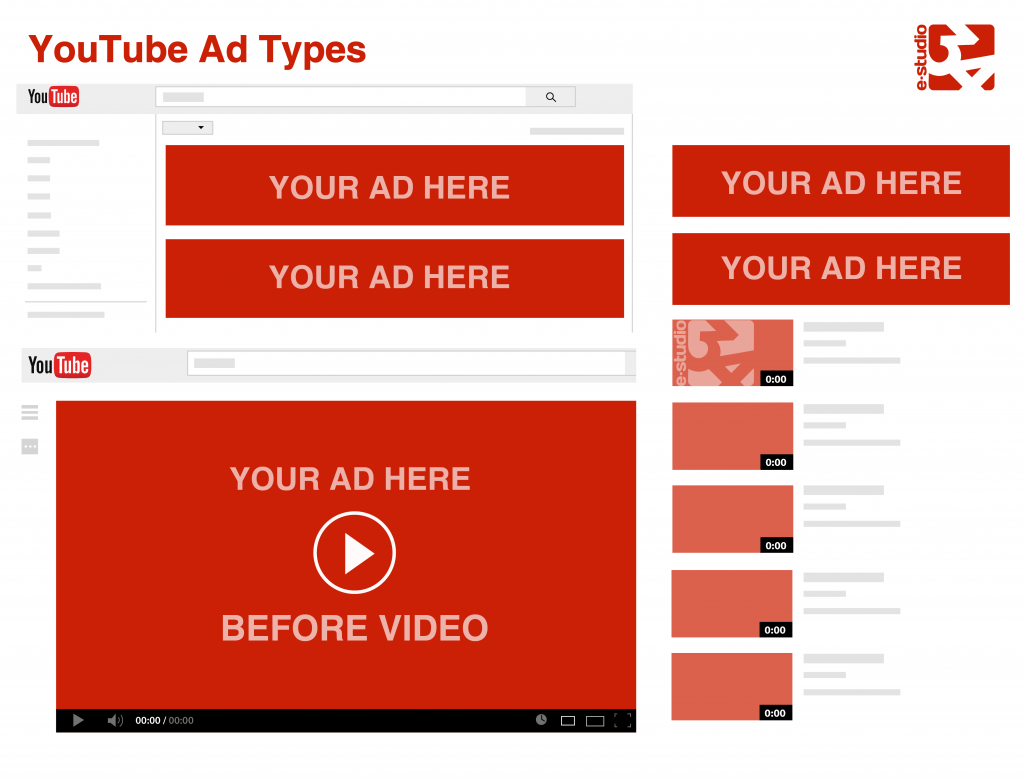
Pros of Display & YouTube Ads
Creative Flexibility
This is by far the most unique differentiator and advantage of the Display Network. While the Display Network allows you to run the ads that you would have liked to run on Facebook, but the system prohibited because you broke the 20% text rule or something else. This can really powerful for brand awareness, because it gives you the freedom to deliver your brand’s message.
Low CPC (Cost per Click)
Google Display Network is going to cost significantly less than AdWords and closer to the ball park of Facebook ads in terms of CPC. However, you can still expect your overall CPC to be higher than on Facebook.
Custom Intent Audiences: Higher Intent than Facebook Ads
What’s also interesting is that Google allows you to build a custom intent audience, similar to how you have the ability to build audiences with Facebook’s Ad Manager. The key difference is how you build the audience. Much like how you build a list of target keywords you want your ads to appear in Google Search results, you can do the same for Display Network. So when someone is reading an article or browsing another website that serves ads for Google Display Network and they had landed on that website from typing in one of your targeted, related search terms, Google will show your ad to that specific user.
Cons of YouTube & Display Network Ads
More room for mistakes.
If you’re planning to produce the ad creative yourself or have someone who’s not a professional do it, then you’re likely to produce a less effective ad. Google and Facebook are the two largest Ad Display Networks in the digital marketing industry. With all of Facebook’s rules like the 20% text rule, it forces you to create the Ad to fit a certain mold. But you could also look at it as training wheels for DIY marketers. With more creative freedom, be careful about using ads that are too text rich.
Not beginner friendly.
Because it uses the Google AdWords platform to build your custom intent audiences from keyword planning and importing your URLs, it’s important that you or whomever is managing your Ad account has a solid understanding of advertising with AdWords.
Hard to Control Ad Placements.
When you create a campaign on Google’s Display Network, it’s going to be difficult for you to control where your ads appear. Especially if you are a beginner. Many advertisers complain about their ads appearing on mobile apps. Among them are many apps for kids and toddlers. Usually, you’ll find that even after targeting demographics of certain age groups, your ads are going to show up in kids’ apps and games. This will result in your ads being mistakenly clicked on by kids haphazardly tapping the screen. There used to be a setting to disable this, by excluding adsenseformobileapps.com. However, in late 2018, Google decided to remove this option. Advertisers have not been happy since.
Re-Marketing
Like the functionality we discussed on Facebook, Google’s Display Network, inside the AdWords platform, allows you to set up ads that only target people who have already visited your site. However, if you’re a lawyer, you won’t be able to use re-targeting like you can on Facebook.
The reason being is that it violates google’s personalized advertising. In essence, lawyers and law firms aren’t able to advertise with re-targeting audiences on Google, because legal matters are considered a personal hardship.
Conclusion
Those are my comparative notes on the 3 PPC platforms discussed above. The first, AdWords is a pure-bred SEM (Search Engine Marketing) PPC platform. It’s by far the most expensive and can be very costly, with little reward if you’re not careful. So can any of them for that matter.
While we have a lot to say in both pros and cons, we use all 3 when managing digital advertising for law firms. They all have their roles to play, when you know how to use them properly and for what purposes. All three marketing platforms work for awareness, consideration, re-targeting and conversion components of the marketing funnel for law firms. A marketing strategy that combines all three with the right synergies and synchronicities can be very powerful.
